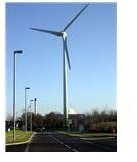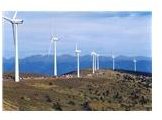Wind Turbines: Vibration Predictive Maintenance
Machinery and Vibration
Most machinery produces some sort of vibration because of moving parts that produce a noise because of the vibration. A machine functioning smoothly will produce some sort of vibration and an associated noise or hum. Vibration in machines can be damped by isolation pads in their foundations and other means. It is when the vibration pattern changes and hence the noise, engineers are able to predict the machinery and its parts are undergoing some sort of stress which is not a part of the normal running procedure.
Rotating bodies like wind turbines can produce vibration when there is some sort of imbalance in their rotating parts, meaning the practice of predictive vibration maintenance is necessary to ensure operational failures do not occur. Vibration can also be cause by misalignment between the parts of the machine and its prime movers. Vibrations are also caused by a bent shaft, misaligned or broken gears and defective bearings. Another reason for vibrations is when the machinery has foundations that have come loose and are, therefore, not functioning as the required restraint.
Vibration Analysis and Its Importance to Maintenance
Vibration analysis forms a very vital part of any maintenance engineer’s tools for evaluating the condition of the machinery and to carry out necessary preventive maintenance so failures are avoided. Modern day equipment available for vibration analysis uses software to predict problems. Previously a vibration analysis involved running the machinery at all speeds and in all conditions and noting the frequencies of the vibrations that each set condition created. During normal running of the equipment vibration frequencies were studied and compared with previously noted similar conditions. Any changes in vibration frequencies alerted the operator to likely problems that could call for preventive maintenance.
Predictive Maintenance in Wind Turbines

Maintenance in any form of machinery can be reactive when machineries are run to failure points. Preventive maintenance, is time based and predictive maintenance is condition based.
Wind turbines are power plants set up generally in remote areas and largely remain unmanned.
They operate totally exposed to the vagaries of the weather whether it be heat, cold, rain or storms. In addition to all these unpredictable conditions, wind turbines because of the nature of their motive power which is the wind, have to operate at constantly varying speeds. Wind turbine operators generally perform maintenance on turbines which is either reactive or preventive. The remoteness of these turbines is a factor in maintenance.
Reactive maintenance costs are the highest because attendance follows breakdown of machinery and probably replacement of costly parts and downtime of the equipment. Preventive maintenance requires the posting of personnel to follow the required schedules and for wind turbines logistics can be a major problem. Predictive maintenance is like the JIT principle and is maintenance done exactly when it is required. Therefore, costs tend to be lower with vibration predictive maintenance.
Predictive maintenance is essentially condition based maintenance and it is possible to install equipment on critical equipment in wind turbines like gearboxes and generators. Because of the low and constantly varying speeds in wind turbines, vibration frequencies have to be noted over a much broader range of operating conditions. Measuring the overall vibration level by locating the transducer measuring the vibration as close to the bearings on gear boxes is a simple way of measurement.
Vibration measurements are best taken in all three dimensional axes, as certain vibrations may otherwise remain undetected. These measurements have to be trended over time and compared with known vibrations when the turbine is running smoothly. It is possible to set up equipment measuring vibrations that will send information from these remote locations to control centers. These control centers have software that constantly evaluates the data and posts warnings whenever such vibrations are near to limits or deviating constantly from safe conditions. This allows the plant operators to immediately rush maintenance crews to a wind turbine location to rectify the faults that are predicted.
Image Source: Wikimedia
References
Yung, Chuck - Vibration analysis: What Does it Mean - Plant Services retrieved at https://www.plantservices.com/articles/2006/154.html
Barber/Goldbeck - Wind Turbine Maintenance & Condition Monitoring - Wind Risk Solutions retrieved at https://www.wwindea.org/technology/ch03/en/3_4_3.html
Lacey, S.J. - The Role of Vibration Monitoring in Predictive Maintenance - Schaeffler retrieved at https://www.schaeffler.com/remotemedien/media/_shared_media/library/downloads/the_role_of_vibration_monitoring.pdf
Dematteo, Anthony - Improving your Vibration Predictive Maintenance Program - Energy Tech retrieved at https://www.energy-tech.com/article.cfm?id=25239
